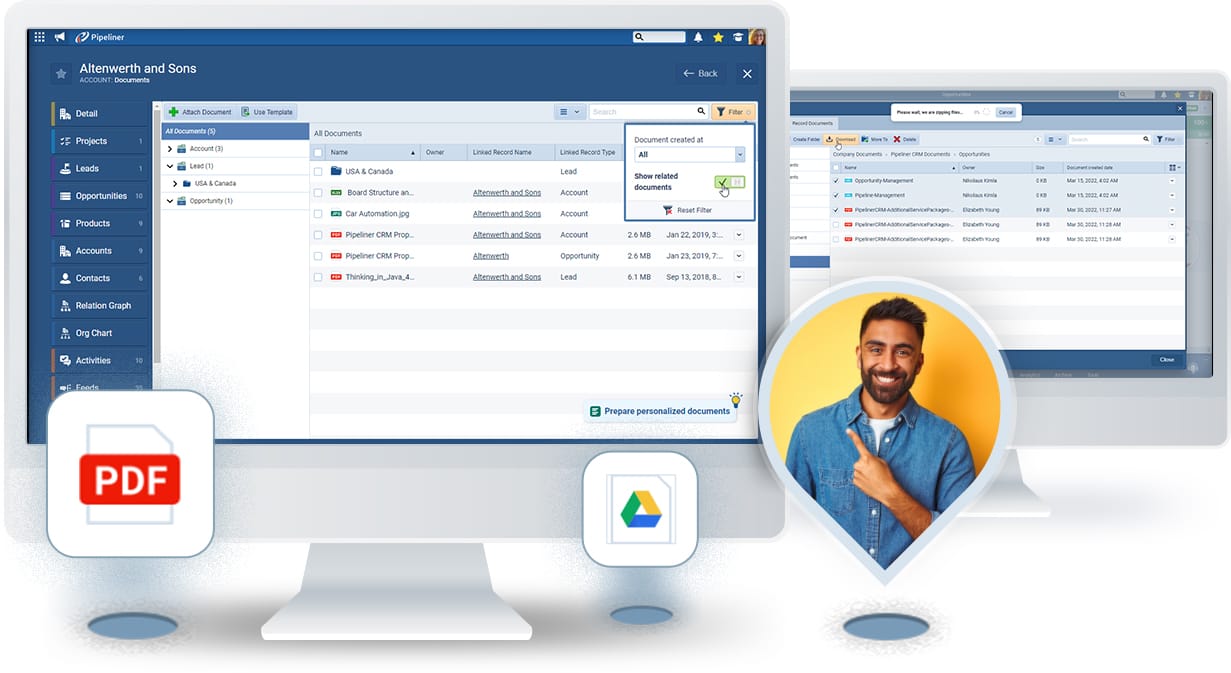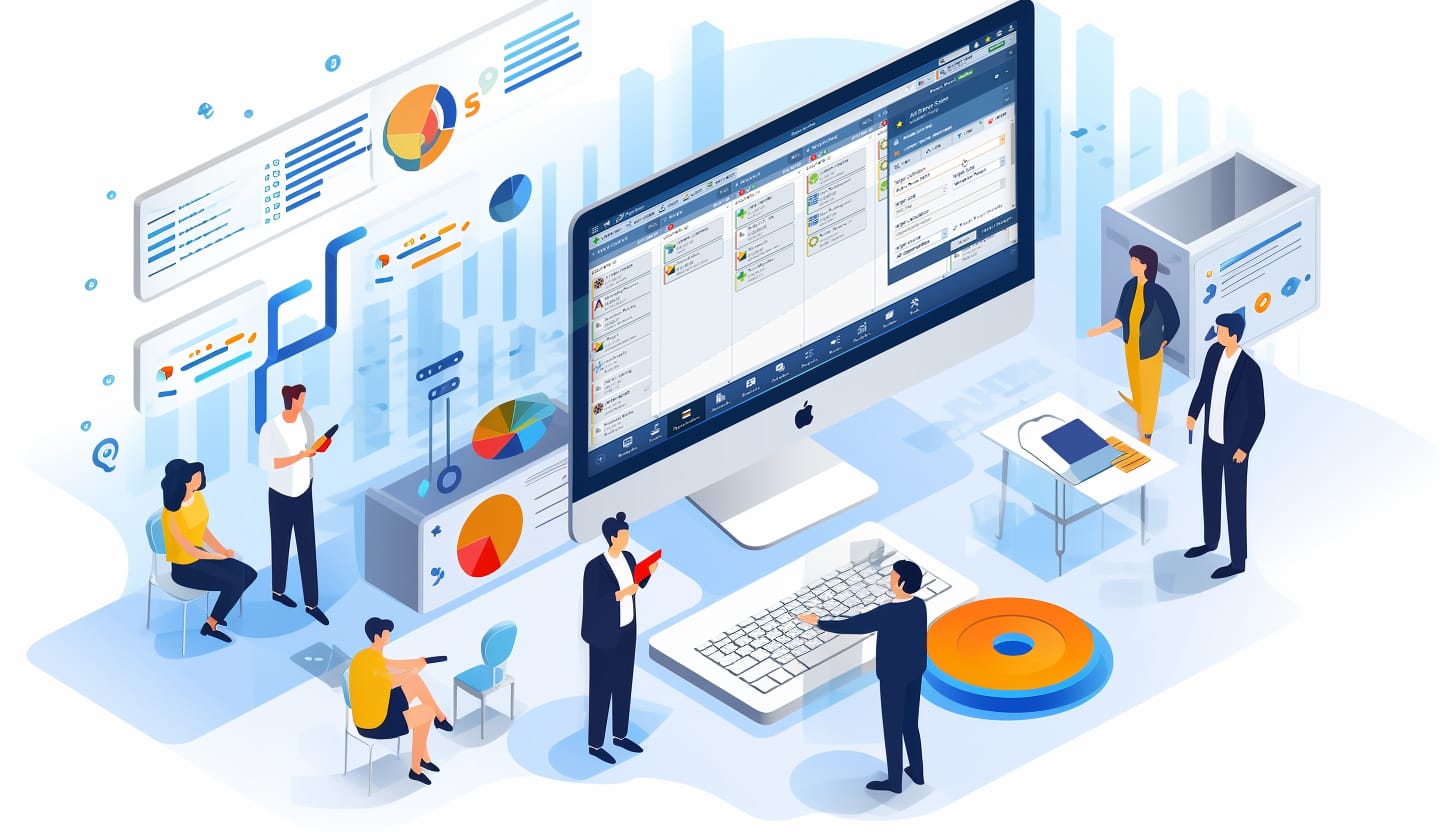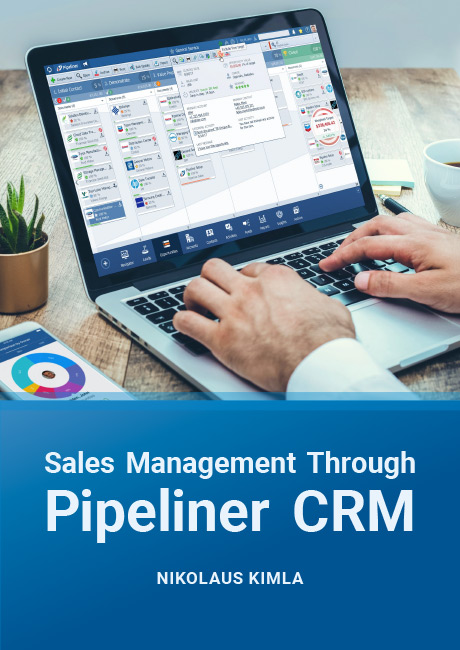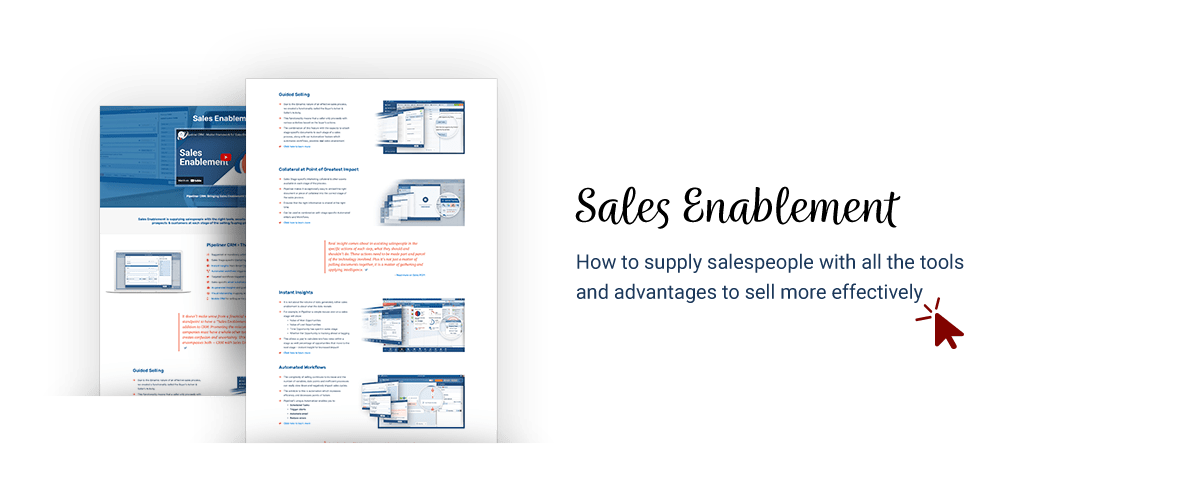Sales EnablementSales Enablement Sales Enablement is a strategic process that provides a company’s sales professionals with tools, technology, training and other resources that improve their performance at customer engagement and at generating value for all stakeholders in the sales process.
What is CRM
- What is CRM?
- Customer Relationship Management Software
- Account Management Software
- Contact Management Software
- Sales Lead Management
- Opportunity Management
- Sales Pipeline Management
- Customer Relationship Mapping
- Sales Enablement Tools
- Sales Management Software
- Sales Process
- Sales Reporting
- Task Management
- Custom Fields
- Team Collaboration
- KPIs for Sales & Leading and Lagging Indicators
- CRM Past Failures?
The Comprehensive Sales Enablement Guide
Overview: What is Sales Enablement?
Sales enablement is expected to focus on providing salespeople with the tools they need to engage their target buyers. In other words, it is a purposeful, continuing process that gives sales teams the information, direction, and training they require to connect with customers successfully. Sales enablement analytics provide data-driven insights to marketingMarketing Marketing is the field, set of actions, or practice of making a product or service desirable to a target consumer segment, with the ultimate aim of effecting a purchase. and sales teams in order to optimize their business and drive revenueRevenue Revenue is the amount of money a business generates during a specific period such as a year or a quarter; also called sales..
Sales enablement entails teaching your sales representatives how to sell. You coach them, provide contentContent Content refers to a material or document released in various forms (such as text, image, audio, and video) and created to inform, engage or influence specific audiences. and certifications, and bring them together at events. This guide will go over the fundamentals of sales enablement, including what it is, why it is important, and how to measure results.

Why Is It Important?
With increased competition due to lower entry barriers and more empowered buyers, sales enablement saves valuable time by keeping sales and marketing teams aligned and in tune with content performance. Selling is more difficult and complicated than ever before.
Thus, it is critical to expanding the sales organizationOrganization Organization is a cohesive group of people working together and formally bound by a shared identity (e.g., one team, company, club, etc.) and a common purpose (e.g., business growth, athletic victory, etc.). beyond a few high-performing individuals. It gives all salespeople the best practices, knowledge, tools, and resources they need to succeed.
After all, sellers invest nearly 60% of their time in finding, editing, or creating content to send to buyers rather than selling. However, nearly 75% of buyers report that the quality of content they receive falls short of their expectations.
Therefore, to meet these expectations, strong sales enablement isn’t just a nice to have; it’s a competitive requirement. To keep buyers engaged, sales reps must have the right content at the right time.

The Best Practices
Here are some sales enablement’s best practices to assist you in your efforts:
1 › Focus On BuyerBuyer A buyer is an individual or organizational entity that purchases a product or subscribes to a service.’s Experience
It seems sense that the buying experience should be the focus of your efforts given that sales enablement is about enabling salespeople to engage the customerCustomer Customer is an individual or an organization that purchases a product or signs up for a service offered by a business.. This has two implications:
- Match your sales strategies and training to the buying process.
- Ensure that salespeople understand the buyer’s identity and where they are on their journey.
2 › Create High-quality Content
Different content formats, such as blogs, white papers, and webinars, enable a large number of salespeople to provide value to a large number of buyers in a scalable and controllable manner.
3 › Sales TrainingSales Training Sales Training is the process of improving the skills, behavior and mindset of sales professionals to upgrade their selling performance.
Sales training is the process by which salespeople learn to sell more effectively. The majority of sales training programs have a flaw, and salespeople quickly forget what they’ve learned, as well as the information, content, and tools they received.
That is why sales training must be continuous, with at least one formal monthly training.
Sales enablement can’t be reactive. It has to be a full-blown strategy that’s woven into the fabric of the company.
 Roderick Jefferson
Roderick JeffersonWho Owns Sales Enablement?
Sales and marketing share ownership of sales enablement. Sales leaders must hold themselves accountable for implementing a platform capable of delivering the content management, customer management, analyticsAnalytics Analytics is the active study of different types of data with the aim of discovering meaningful patterns and translating these into insight (such as historical analyses and forecasts), or action (such as those intended to improve business performance)., and sales training content that their organization requires.
Some basic organizational rules can help you structure your program:
- The vast majority of this information is typically created by marketing.
- Marketing should bear the majority of the responsibility for sales training.
- Sales management’s responsibility is to ensure that the sales enablement program is implemented.
The best organizational rule for sales enablement is that marketing is a better creator, and sales is a better enforcer.
Experience Pipeliner CRM Now
Key Elements of Sales Enablement
A company’s bottom line benefits greatly from successful sales enablement. The goal is to boost conversionConversion Conversion is the process of turning a target consumer into a paying customer; or more generally, the point at which a user performs a specific action favorable to a marketer or a seller. rates by providing genuine value to customers. Sales enablement services provide relevant insights into the sales process, assisting sales professionals in determining what they need to do next to increase the likelihood of closing the deal.
Here are four key elements that it should include:
Coaching and Training
Training and coaching are required for effective sales enablement. Salespeople develop the necessary soft skills and learn what they need to know to close more deals through training. In fact, that is the only way a company can truly improve its team’s closing ratio.
The greatest way to coach and monitor a representative is to observe what they are doing, whether it be by listening in on calls or attending presentations and making modifications after the fact. It is preferable if the coaching and monitoring are done in a positive manner.
Content
Sales content is an essential component of effective sales enablement. According to the sales enablement principle, salespeople should provide value in every interaction with the customer, and in order to do so, they must have the appropriate content available at each stage of the process. Salespeople will be more equipped to approach customers, earn their trust, and make deals if they have access to more classified content.
Strengths
The all-too-common management approach today is to exploit an employee’s weaknesses and try to strengthen them. A salesperson is generally skilled in certain areas. Thus, it could be as a “hunter,” someone who excels at discovering new opportunities and getting them moving. It could be as a “farmer,” someone who excels at nurturing and growing deals. Alternatively, it could be as a closer someone who can bring in that deal for the win.
Determine how to compensate salespeople for this expertise and put them in places where they can excel for both the organization and themselves.
Sales Enablement Tools
There are numerous tools on the market with various functionalities that aim to support the sales process. A salesperson requires the right tools to stay on top of opportunities. Content management, communication tools, prospecting tools, CRM and sales management tools, coaching tools, and other services are available. The list is endless.
Consider how useless a tool is without training. Only invest in tools that are appropriate for your processes and will allow your team to be more efficient without requiring additional work from them.




